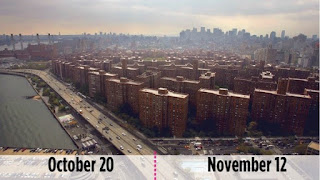The Americans born after 1980 make up the
largest generation in history, the Millennials. Let’s take a look at where the affluent millennials call
home.
1. Jersey City, N.J.
Jersey City is the second most populated
city in the state of New Jersey after Newark. Millennials live here where rents
and homes cost less, commuting by train into the city of New York is still
close enough. 2.2 percent of Millennials who live in Jersey City have an annual
income of more than $350,000.
Average
home value: $345,800
Average
rent: $2,180
2. Oakland, California
Oakland is the third largest city in the
San Francisco Bay Area, the eighth largest city in California, and the 45th-largest
city in the U.S. 2.6 percent of Millennials made more than $350,000.
Average
home value: $586,800
Average
rent: $2,707
3. Washington, D.C.
Washington, D.C., the U.S. capital, has a
population of 658,893. 2.8 percent of the millennials there are making more
than $350,000 a year.
Average
home value: $499,300
Average
rent: $2,534
4. New York City
New York City has a population of 8.406
million, has five boroughs, and is home to the Empire State Building, Statue of
Liberty and other iconic sites. 2.8 percent of Millennials living in New York
City make more than $350,000 a year.
Average
home value: $612,400
Average
rent: $2,336
5. Cambridge, Mass.
Cambridge is in the Boston metropolitan
area, with a population of 107,289. Mostly because of tech and bio jobs, 2.9
percent of Millennials are bringing home the big bucks. However, about 7.7
percent of those 55 and older are making more than $350,000.
Average
home value: $644,400
Average
rent: $2,604
6. Denver, Colorado
Denver is the capital of Colorado with a
population of 649,495 and hot housing market. Many young people have moved here
after being offered high paying positions in the finance and tech fields. 3
percent of them made more than $350,000.
Average
home value: $331,100
Average
rent: $1,942
7. Pasadena, California
Pasadena is the 183rd-largest
city in the United States, having an estimated population of 139,731. 3.3
percent of Millennials living there made more than $350,000.
Average
home value: $714,300
Average
rent: $2,619
8. Sunnyvale, California
Sunnyvale is located in Santa Clara County
and is a Silicon Valley hot spot. As of 2010, the population was 140,095. Of
its Millennials, 3.9 percent made more than $350,000.
Average
home value: $1.14
million
Average
rent: $3,877
9. Seattle, Washington
Seattle is home to the thriving tech
industry, with Microsoft and Amazon.com headquartered in the metropolitan area.
Population as of 2013 was 652,405. Of Millennials living in Seattle, 3.9
percent are making more than $350,000.
Average
home value: $533,000
Average
rent: $2,634
10. Huntington Beach, California
Huntington Beach is a beach town in Orange
County, with a population as of 2013 of 197,575. This surf town has just over 5
percent of Millennials who live there that made over $350,000.
Average
home value: $733,200
Average
rent: $2,902
11. San Francisco, California
San Francisco is known for high-paying
tech jobs and 7.8 of its Millennials make more than $350,000.
Average
home value: $1.13
million
Average
rent: $4,542
12. Arlington, Virginia
Arlington has a population of 224,906 as
of 2013 and 8.7 percent of Millennials in this D.C. suburb made mor3 than
$350,000. That’s more than the 55 and older age group brought home. 7.9 percent
of those 55 and older made more than $350,000.
Average
home value: $607,100
Average
rent: $2,690





































